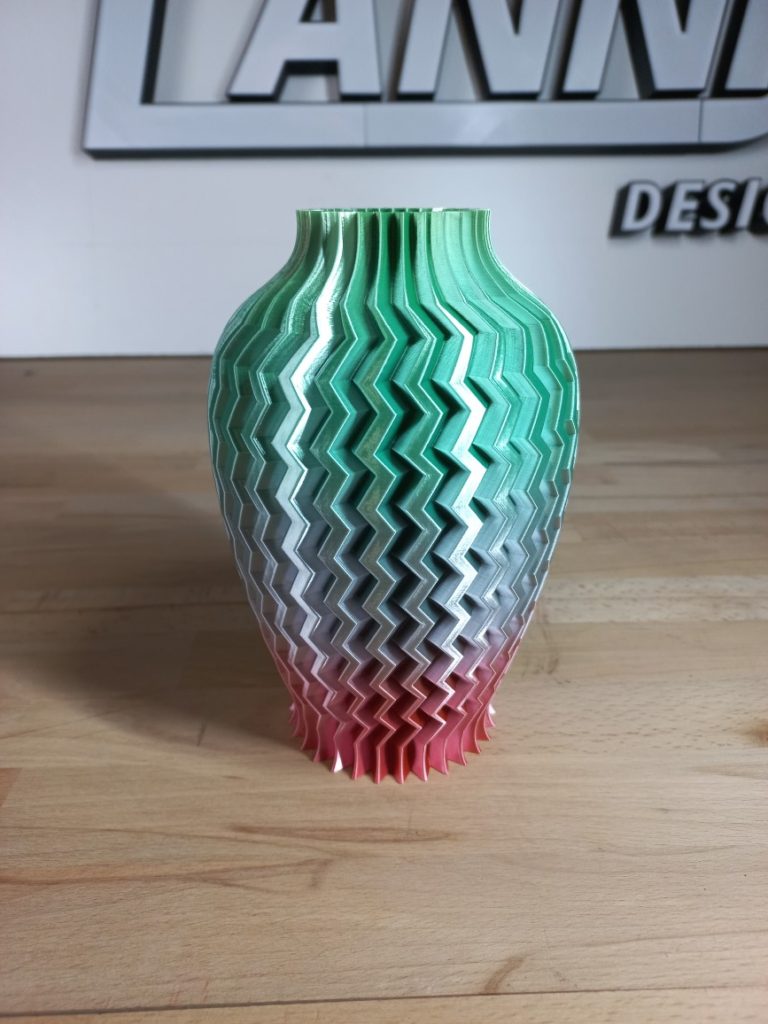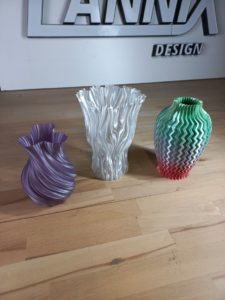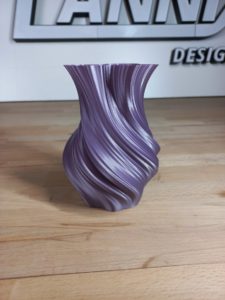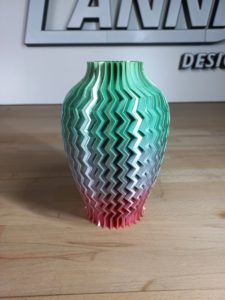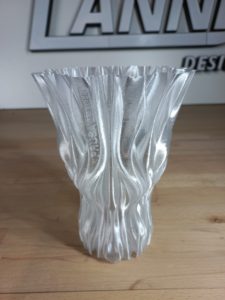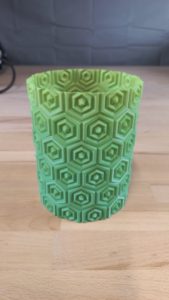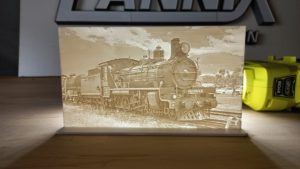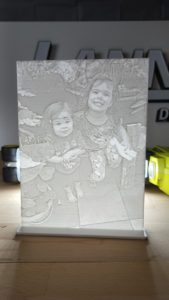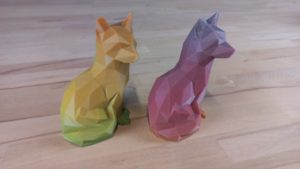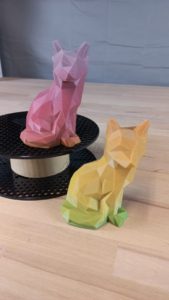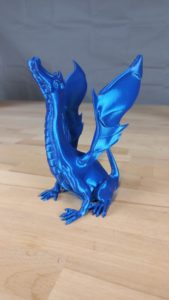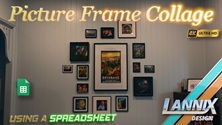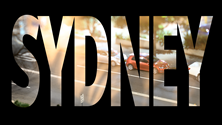Talking to people about 3D printing tells me that people aren’t always aware of the beautiful results that can be achieved through the use of a few different printing techniques. I’d like to highlight a few of them now.
Filaments
The use of metallic, silk and colour changing filaments can add a significant amount of appeal to otherwise boring 3D models. Take a look through the gallery below to see a few examples of these. The three vases are printed in quite different filaments, those being Aurarum metallic purple PETG, Prusament clear PETG, Tecor rainbow silk PLA+ and Tecor matte rainbow PLA. The two foxes are also in the matte rainbow PLA and the dragon is a Prusament royal blue PLA.
Vase Mode
As you may already know, 3D printing is usually a build up of many horizontal layers to form a three dimensional object. Vase mode uses a slightly different technique to print a solid base then extrudes one continuous outer layer to create what is essentially a vase. This can be done with any solid 3D model with just one vertical section as the software will modify it to suit.
The benefit of vase mode is that the prints become less opaque, allowing varying levels of light through depending on the filament. A future Lannix Design project involves experimenting with this mode to create a new shade for a broken lamp we have laying around.
Objects made with vase mode are very thin and therefore aren’t particularly strong. To remedy this, it is possible to setup your model with 0% infill and no top layer to create a strong vase as is the case with the pink-to-green vase shown in the gallery.
One of many possible logos for the new business.
Lithophanes
A lithophane started in ancient times as a pottery technique where an artist would produce a piece of varying thicknesses so that it would allow light through the ceramic and appear as a picture. A 3D printer can achieve the same result using software processing, taking any digital photo and creating a 3D model with varying thickness dependent on colour gradients.
If you’re unsure what I mean by my dodgy explanation, check out the photo of the train and my nieces in the gallery. The resultant 3D prints look a little strange until you pass a light behind them. The effect is quite amazing if you ask me!
These are just a few of the techniques used to make our prints look pretty.
Bis später!
